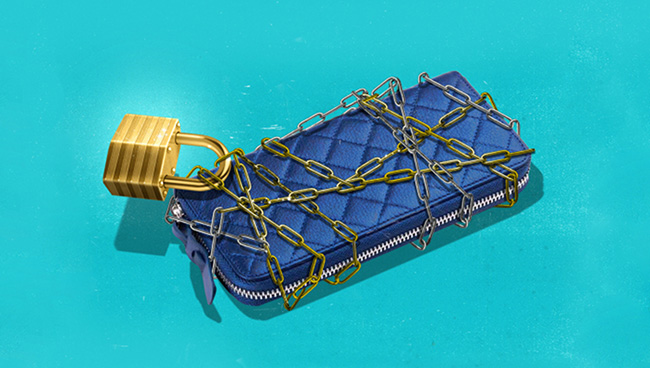By Allison Collins on February 26, 2021 || WWD
“They’re calling it the she-session. That’s going to affect beauty sales, that’s going to affect the quest for value.”
New year, new beauty shopping habits?
For several months, industry insiders have whispered predictions of a “trade down to mass,” insinuating that consumers who have been hurt by the economic fallout from the coronavirus will switch from higher-end beauty products to lower-end ones.
But the numbers are in, and trading down seems like it’s only part of a much larger story.
IRI numbers for the 52 weeks ended Dec. 27 show sales trends in the mass market are in line with the broader beauty market. Lipstick sales were down 34 percent, while facial moisturizer sales were up 14 percent. Makeup sales broadly were down, while hair and nail sales were up, IRI data shows.
What’s actually going on, experts say, is a more nuanced shift in how consumers look for value. Some shoppers are trading down, while others are stretching out the time between buying products and using fewer products overall.
“It’s about people saying, ‘How much do I need? Can I use up what I have? Where do I choose to spend my money?’” said Wendy Liebmann, chief executive officer of WSL.
“It’s about people saying, ‘How much do I need? Can I use up what I have? Where do I choose to spend my money?’” said Wendy Liebmann, chief executive officer of WSL Strategic Retail.
“From our view, it’s a lot more nuanced than that,” agreed Esi Eggleston Bracey, executive vice president and chief operating officer for beauty and personal care of Unilever North America.“It’s not so simple as trade down or trade up, because it’s not that linear.”
Today’s beauty shoppers are looking for value, and they’re finding it in a slew of different ways. They’re also shopping differently, consolidating IRL shopping trips and buying online.
In recent research conducted by WSL, one-fifth of consumers planned to cut back on nonessential spending, and between one-third and one-half of respondents planned to cut spending in beauty. Those shoppers planned to cut back by switching to less expensive brands, less expensive retailers or by buying less, Liebmann said.
“It’s not this notion of trading down. One of the attributes here is, ‘I need to shop in stores where I get the lowest price. ’Depending on the category, that’s one-third of people,” Liebmann said.
In beauty, 46 percent of shoppers said they planned to cuts pending in makeup in the next three to six months, often instead opting to use up products they already have at home. Of those, 19 percent planned to lower spend by switching to a less expensive brand, Liebmann said. In skin care, 36 percent of people said they would cut back spending, and 25 percent planned to trade down WSL’s research shows.
“Most of it is, ‘I don’t need to use as much,’ or, ‘I’ll buy it somewhere that’s cheaper,’” she said.
That cheaper place, especially since the onset of the pandemic, is the internet. Online sales for beauty were up in 2020, and shopping online allows people to price shop very easily, said Nielsen’s Tara James Taylor, senior vice president of beauty and personal care.
“We do see some shifting to online, but we also see some shifting to drug and mass, which is lower-priced items,” Taylor said. Nielsen data shows that 37 percent of beauty sales and 19 percent of personal care sales are happening online.
There’s also a shift to masstige products, which often can be found during one-stop shopping trips at places like Target. Masstige beauty was already gaining traction before the pandemic with the popularity of lines like The Ordinary and Versed, but now, things have accelerated more quickly, experts agreed.
“Brands in the middle are doing better,” said Larissa Jensen, beauty industry analyst at the NPD Group.
“Consumers are searching for value, but it’s hard when you’ve got a promotional industry, which is what we’ve become at this point; what came first, the chicken or the egg?” Jensen said. During the pandemic, brands and retailers alike both tried to “excite consumers with deals,” Jensen said. Now, a few years down the line, consumers are trained to look for value.
Compounding matters is the impact of the pandemic on employment. Most beauty shoppers are women, and women have been hardest hit by job losses related to the COVID-19 pandemic. In December, all of the 140,000 jobs lost were women’s jobs.
“They’re calling it the she-session. That’s going to affect beauty sales,” Jensen said. “That’s going to affect the quest for value.”
“If there’s a universality, it’s that people are thinking about value very differently in the current environment,” Bracey said.“It’s not just about what’s less expensive, it’s getting more for your money — more experience, more joy, more access, more ease.”
Value is being reframed, Bracey said, as people “invest in things that make us feel good.” People aren’t as able to go out and get a manicure or go on a trip, so they’re taking baths and buying furniture. In response, Unilever has launched a brand called Find Your Happy Place at Walmart that sells bath and body products.
That type of option — clean, purpose-driven, organic, sustainable, etc. — is one consumers are still willing to pay for, experts agreed.
Jensen termed it “values” shopping.
Sustainable brands grew dollar share in 2020, she said, and so did “advocacy brands” and Black-founded brands. “It’s fueling brand growth for these brands that support inclusivity and social missions, but many of these newer brands aren’t crazy high price points either,” she added.


